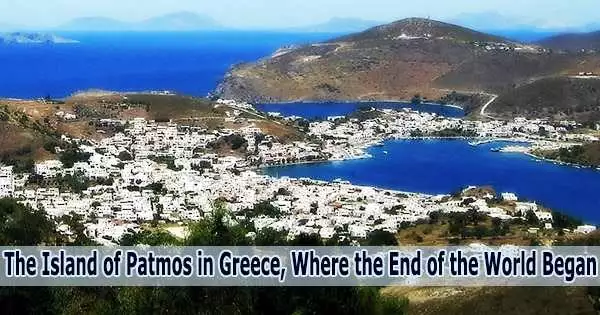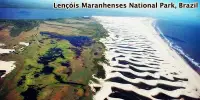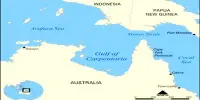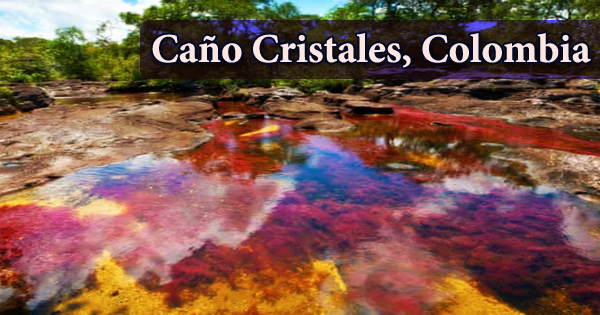The island of Patmos (Greek: Πάτμος, pronounced (ˈpatmos)) is a small Greek island located in the southeastern Aegean Sea. It is part of the Dodecanese island group and is situated between the islands of Ikaria and Leros. The barren arc-shaped island consists of three deeply indented headlands joined by two narrow isthmuses; its maximum elevation, that of Mount Áyios Ilías (883 feet (269 metres)), is near the centre.
The island appears to be a normal Greek vacation spot, situated beneath clear blue sky in the eastern Aegean Sea, but that isn’t the case. It’s where the end of the world began.
The island is famous as the location where John of Patmos received the visions found in the Book of Revelation of the New Testament, and where the book was written. Here, the Greek Orthodox chapel of St. Anne, constructed in the early 17th century, completely encloses the cave where John is said to have seen visions that he interpreted as the final judgment.
If it wasn’t for the sign reading “Cave of the Apocalypse” you wouldn’t know you were entering the sacred grotto. The chapel, it’s north side sealed by a rocky alcove, lies at the end of a series of corridors.
A silver miter rises inside above the enclosed cleft where the biblical figure is thought to have rested. He is supposed to have put his hands in the crack to stand up and a silver bracket surrounds that area.
“This is where Prochorus the scribe took down John’s reams of words as the saint was having the vision,” the chapel’s warden says, pointing to an open Bible sitting where the rock forms a natural pedestal.
“And this is where God’s voice came through and spoke to the saint,” he adds, pointing to a fissure on the rock above.
The fissure ends in a triple point, considered to symbolize Christianity’s holy trinity the father, son and holy ghost.
The island’s main town, Chora, is a UNESCO World Heritage Site and is filled with charming whitewashed houses and narrow streets. Other popular attractions on the island include the Monastery of St. John the Theologian, the windmills of Chora, and the scenic seaside village of Skala.
‘Sacred Island’
The monastery of St. John, an enormous castle that looms over the island, is the principal site of religious activity on Patmos, sometimes known as the “sacred island.” Two monks continue to reside in cells above the cave today.
Established in 1088 by St. Christodoulos, a Greek monk, the monastery still contains original structures dating to the 11th century parts of the fortifications, the kitchen, some cells, the cistern and, most importantly, the church of St. John, which boasts some superb frescoes.
While the church is impressive, the monastery’s museum and library are several notches more formidable.
The original “golden bull” by Byzantine Emperor Alexios I Komnenos has pride of place. This ancient seal granted the whole island to Christodoulos, with imperial monograms appearing all over the scroll in the way we initial contract pages nowadays.
There’s also a firman a type of edict issued by Sultan Mehmed the Conqueror from 1454 that confirms the monastery’s independence and assigning a monk as a tax collector.
The library said to be the most important in Greece outside the Greek Orthodox center of Mount Athos boasts 1,200 manuscripts in parchment, vellum or scrolls, including leaves of Mark’s gospel dating from the 6th century.
Although the cave and the monastery are the principal attractions on Patmos, they’re not the only reason people flock to the island according to Panagos Evgenikos, leader of the island’s council.
“Some years ago we joined a European conference on religious tourism along with places like Santiago de Compostela in Spain and Lourdes in France,” says Evgenikos. “The final consensus was that religion by itself is not enough to attract tourists to a destination; there must be an extra pulling factor.
“In the case of Patmos, it’s our beaches and the beauty of Chora, our capital.”
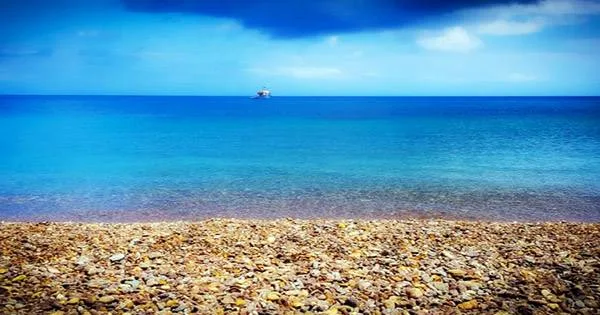
Rainbow beach
A swim at Lambi in the north of Patmos helps prove Evgenikos’ words.
The beach here is dotted with small, multi-colored pebbles ranging from butterscotch orange to sweet potato red and egg yolk yellow and the combined effect is extraordinary.
Then there’s Petra, a sandy spit of land joined to the free-standing rock of Kallikatsou according to legend the rock is formed of a young girl whose mother out put a curse on her after she swam here straight after Holy Communion, despite being forbidden to do so.
Another highlight is the lovely fishing village of Grikos, facing the small island of Tragonissi, a natural windbreaker to a safe, sandy beach.
Located in the north of Greece’s Dodecanese island group, Patmos has no airport and it’s not easy to reach, but it attracts VIPs from all over the world due to its tranquility the Aga Khan, David Bowie and Giorgio Armani have all been regulars over the years.
In fact, several have made Patmos their home and sought to benefit the island.
Nicholas Negroponte from MIT’s Media Lab installed an island-wide Wi-Fi system for everyone to surf the internet for free.
Another Patmos lover, the financier Charles Pictet, restored three windmills on a hill opposite the monastery. One is fully functional and produces wholemeal flour.
Josef Zisyadis, a Swiss politician, has more ambitious plans he’s cultivating vines in 20 acres of land near Petra beach with Dorian Amar, a French winemaker.
Amar proudly shows off an Assyrtiko white and a Mavrothiriko red under the cheeky label of “Domaine de l’Apocalypse.”
“The soil is fertile, there’s water in the ground, but the terroir is not perfect for the vines,” he says. “There’s wind and there’s sun but there’s no shade.”
“I’ve been planting trees to lower the temperature and improve the production an oak here, a few carob trees there give me a few years and I’ll have turned this patch into a paradise.”
Many would argue that the island is already a paradise because of its relative inaccessibility, but is the building of an airport on the cards?
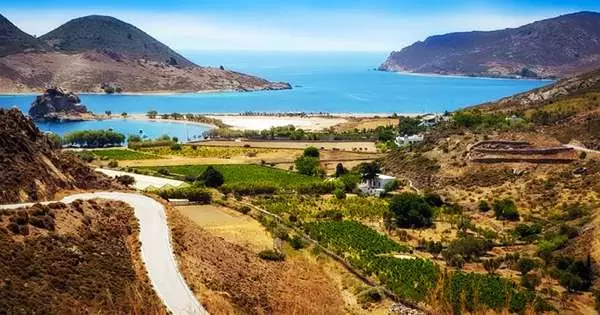
No nudity
Christos Patakos, manager of Patmos Aktis, the only five-star hotel on the island, shakes his head.
“I don’t think it’ll ever happen,” he says. “There’s a general feeling, especially among the regulars and those who own houses on Patmos, that the island must be ‘protected’ from mass tourism. It is they who object.”
While the monastery is one of the main draws here, it doesn’t dominate life on the island.
“The monastery has a lot of clout, but it keeps out of everyday life as long as there’s mutual respect: for instance, there’s no nudism and Chora’s bars shut at 3 a.m.”
Father Bartholomew, a jovial, communicative monk, agrees.
“That’s when we go to Matins,” he interjects. “Tourists forget that this is a living monastery and that we must fulfill our obligations.”
Bartholomew also concedes that the monastery would welcome an airport on island.
“It would only marginally increase tourism and be beneficial for the locals in medical emergencies.
According to Bartholomew, the monastery has always sided with the municipality and the tourist authorities when it comes to development plans.
“An army base here wanted to have artillery exercises during the summer; we forbade them,” he adds.
“As for the opening hours: we close at 1:30 p.m. because we hold Vespers at 3 p.m. We wake up for Matins at 3 a.m. with Mass at 6 a.m. so that we can open at 8 a.m.
“Even by mid-June some shops may not have opened yet, but we’re the only reliable operation on the island, open all year round.
“It’s all balanced and harmonious; we all know where we stand.”
Patakos agrees. “The island has many fans, who come here to recharge their batteries and absorb its energy You can feel the vibes when you arrive.
“Yes, tourism is mainly beach tourism but we’re lucky to also have great sights like the monastery and the cave.”
“Patmos is a tiny Byzantium, like Mount Athos but more advanced they don’t call it ‘the Jerusalem of the Aegean’ without reason.”
Patmos is also home to the Patmian School, a notable Greek seminary. The island yields grapes, cereals, and vegetables, though not enough for domestic needs. Tourism is the main economic activity.
Overall, Patmos is a wonderful destination for those seeking a mix of spirituality, relaxation, and Greek island culture. The Island of Patmos has regular ferry services, which connect it to the following ports: Agathonissi Island, Mykonos Island, Paros Island, Piraeus (the main port of Athens), Pythagoreio and Karlovassi on Samos Island, Syros Island, Leros Island, Naxos Island, Arkoi, Lipsi Island, Symi Island and Rhodes Island.
